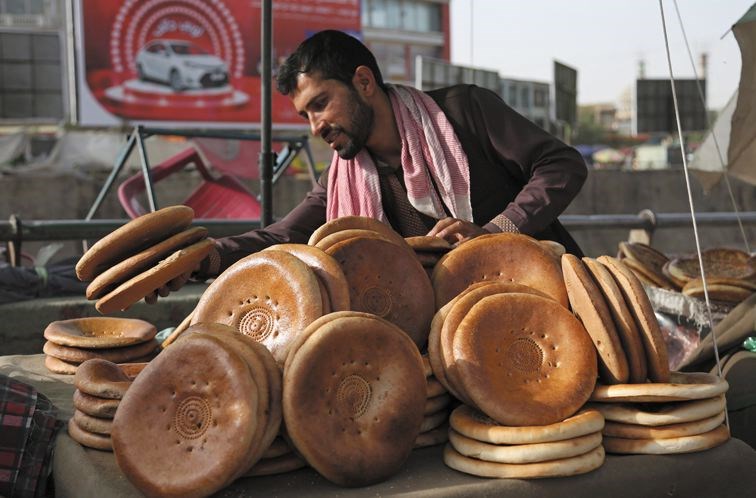The following is a revised version of a column that first appeared in the Oct. 4, 2012 print edition of The Citizen:
Some 11,000 years ago, as the glaciers retreated and the world warmed again, the steppes of southwestern Asia were exposed, revealing vast flat grasslands inhabited by wheat and other grains.
As humans began to occupy this land they made several discoveries. They learned to cultivate the grains. They learned to grind them. They learned to use the grains to make a gruel lacking in flavour, but highly nutritious and containing proteins.
They shifted from hunter/gatherers to farmers and herders. Modern civilization was born.
At the time, though, it probably didn't feel anywhere near so dramatic. We are not even sure of the timing of many early events as there isn't a historical record except in the form of the artifacts left behind.
However, we do know that early humans quickly developed the technique of using ground grains to make bread.
These early forms of bread were what we would now classify as flat breads without a leavening agent. One can even imagine how the discovery might have come about as cook tried to dispose on some left over gruel by dumping it in a fire only to observing it baking into an edible flat crust or some flour paste was drop on a rock around a fire giving a thin flat bread.
In any case, bread presented several advantages as a food source. It is easy to make. It is portable. It is nutritious. It keeps for a short while. And it is smells so good when cooking!
One could make the argument it is the perfect food, but it is lacking in a few key nutrients. However, in combination with the rest of our diet, it was a nutritional gold mine for early peoples. It is perhaps not surprising various versions of bread were developed independently around the world.
From tortillas to naan, from rye to Wonder Bread, many cultures have developed their own versions.
Almost all breads, though, depend upon the interactions of the proteins in wheat or other grains.
In wheat flour, the two main proteins are gliadin and glutenin. Both become somewhat unpleasant to handle when mixed with water. Indeed, when I was a child, we used to make the paste for paper mache out of just flour and water.
Gliadin is the gluey part of the protein while glutenin is the rubbery component. In the presence of water and with the mechanical action of kneading, these two molecules combine to form the extraordinary compound gluten.
In essence, the addition of water causes the proteins to open up a bit and the kneading forces changes to the molecular interactions resulting in the new protein structure.
Kneading bread dough forces a chemical reaction to occur.
Gluten is a blend of the more useful properties of gliadin and glutenin. It is cohesive or gluey and thus, capable of sticking together in the presence of heat.
It provides the three dimensional structure to the dough.
It is also elastic or rubbery which allows the dough to be stretched, rolled, and manipulated into any number of shapes.
Of course, bread comes in both leavened and unleavened varieties.
The unleavened breads, such as tortillas, are not flat because they lack a leavening agent. Rather, they are flattened by rolling which makes them easier and quicker to cook.
In regions where there is little available fuel or hot daily temperatures, this form of bread is preferable. However, it is possible to make a very dense form of bread by cooking this dough in a ball or bun shape. It is hard, and difficult to eat, but has the advantage of lasting for a very long time.
In the case of leavened bread, the active agent is yeast. Mixing yeast with sugar and water initiates the fermentation process. The yeast eats the sugar, for energy, and releases as by-products both carbon dioxide and ethyl alcohol.
Yeast are hardy creatures capable of breaking down complex carbohydrates for nutrition. But this doesn't mean they will grow under any condition.
Ideally, they would like a moist warm environment. In growing a yeast culture for baking homemade bread, lukewarm water and a table spoon of sugar is just about right. Too hot and the yeast die from the heat. Too cold and they produce undesirable compounds as by-products.
The carbon dioxide the yeast produce during fermentation provides the air pockets inside a loaf of bread making it fluffy. The alcohol might help a bit because it turns to a gas in the heat of an oven, but it evaporates out of the bread.
In the end, it is the complex mixture of gluten and other components, aided by the subtle interactions of yeast, that produce a mouthwateringly good, light, airy, and fresh loaf of bread. After 11,000 years, one could argue we might finally have it right.



